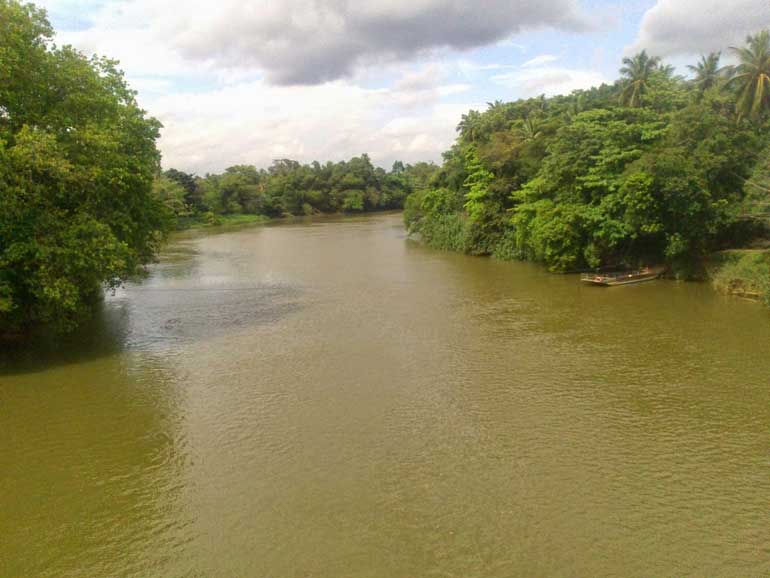Friday Dec 05, 2025
Friday Dec 05, 2025
Saturday, 23 April 2016 00:00 - - {{hitsCtrl.values.hits}}

It is reported that May will also be a hot month in Sri Lanka. Reading through the news report, my mind went back to my childhood days in the early 1940s.
My father was the head master of Hanwella Bilingual School – 18 miles from Colombo on the Colombo-Avissawella low level road. He had an official bungalow although the head of the adjoining Sinhala school was not entitled to one. The bungalow was in between the two schools and all three was on the banks of the Kelani Ganga.
Come the month of May. I remember my mother getting ready to vacate the house if the need arose. Why? May was the ‘floods month’.
There were always heavy rains in the upper catchment areas and the water starts gushing down the river overflowing to the low-lying areas on the way. Roads go under water. So do the houses and other buildings at low levels close to the river. Vehicles cannot move. Schools are closed. The ferry service, the only means of crossing the river (there was no bridge at the time) could not operate.
Depending on how long it takes for the floods to subside, people find it difficult to get their food requirements. The duration of floods depends on the rain. But most of them were ready with adequate stocks for a few days.
We were at a fairly high level and every time the floods come, families shifted to the two schools with their mats and pillows and precious belongings. The furniture was tied to prevent them from falling if the water flowed in. Most of the other household things were stacked at higher levels where the water could not reach. Having observed the pattern over the years they knew exactly how much the water levels would rise up to.
Next to the bilingual school was the village tribunal (‘gam sabhava’) at a higher elevation and adjoining it was the market. The rest house was at the highest point.
It was a fearful sight to see the water gushing down at high speed down the river carrying logs, trees, dead cattle and all types of muck. What was once a calm and collected scene with lovely greenish blue water was now a dark brown muddy huge volume of water speeding down.
Floods meant fun time for us young ones. There were three steps to get into our house. So we were quite safe unless the water level really rose. My mother would spend a sleepless night watching the water level. As the water got to the steps, I would try to get the water out using my feet!
In the morning, a young lad known to us (invariably he would be a student in a higher class) would come round rowing his ‘oruva’ to see how we were and whether we needed anything. “Podi Mahattaya, yamu ravumak,” he calls me to do a round. I look at my mother. Reluctantly she agrees if she feels it’s safe. He would take me round what was a few days earlier was bare land and paddy fields, now a sea of water. What a beautiful sight it was!
I can only remember one instance when we had to leave the house and shift next door. I think we occupied the magistrate’s resting room in the tribunal which was generally kept locked. Water subsided the next day, so we were back at home.
As the water subsided, it was more work for the families. Once they got back to their homes, the clearing operations begin. The floors had to be washed, wiped and dried. It was work for the females since the males had to go the work.
Gradually, the schools reopened. Roads were clear. Bus services were back. The ferry service was operational. The traders in the market started getting the vegetables and other foodstuffs.
We waited till the muddy water disappeared and again we were able to enjoy a bath in clean water.